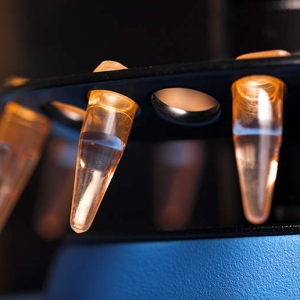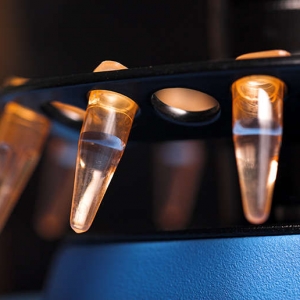Loading dyes are an important component in gel electrophoresis and are mixed with samples for use. They are used for both agarose and native polyacrylamide gels. Loading dyes are mainly composed of dyes, Ficoll or glycerol, and water, with xylene cyanol, Tris and ethylene diamine tetraacetic acid (EDTA) optional. Available tracking dyes include bromophenol blue, orange G, or xylene cyanyl FF. EDTA can be added as a chelating agent to some dyes and inhibit nuclease activity, while Ficoll and glycerin help the samples in the ladder form a layer at the bottom of the well. Clear results are obtained by loading dyes with appropriate concentrations of components. The concentration can be adjusted according to the requirements of the experiment. The loading dye added to the DNA sample to be separated is usually at a concentration of 6X (e.g., 0.25% bromophenol blue, 0.25% xylene cyanol, 30% glycerol).
Loading dyes have three important functions for gel electrophoresis. First, the main function is that the dye visualizes the sample, thus simplifying the loading process. Second, loading dyes are used as color indicators of nucleic acid migration in gel electrophoresis, allowing for the estimation of the distance that nucleic acid fragments have migrated. Finally, loading dyes containing Ficoll or glycerol add density to the sample so that it sinks into the gel and does not diffuse into the buffer.






